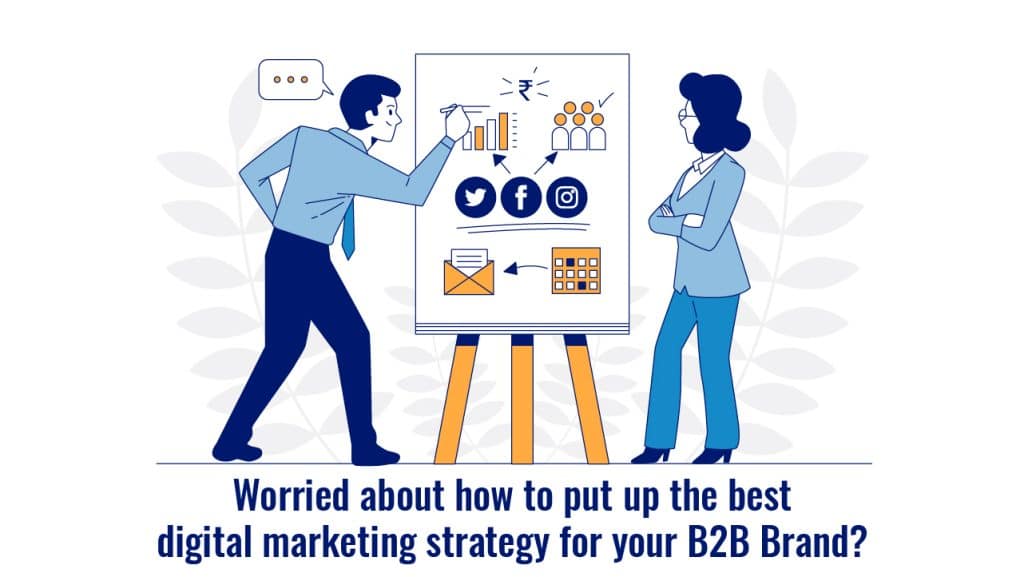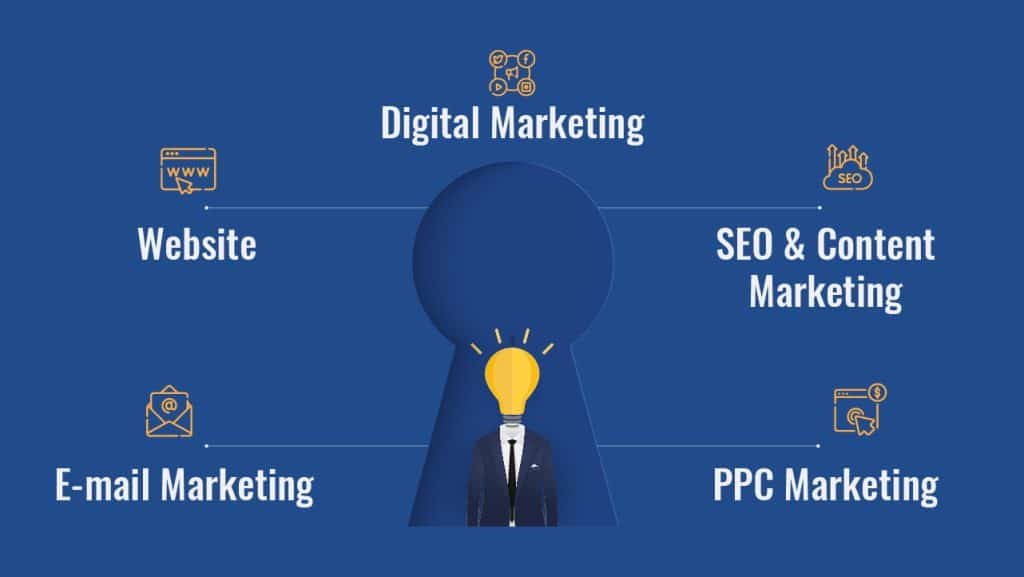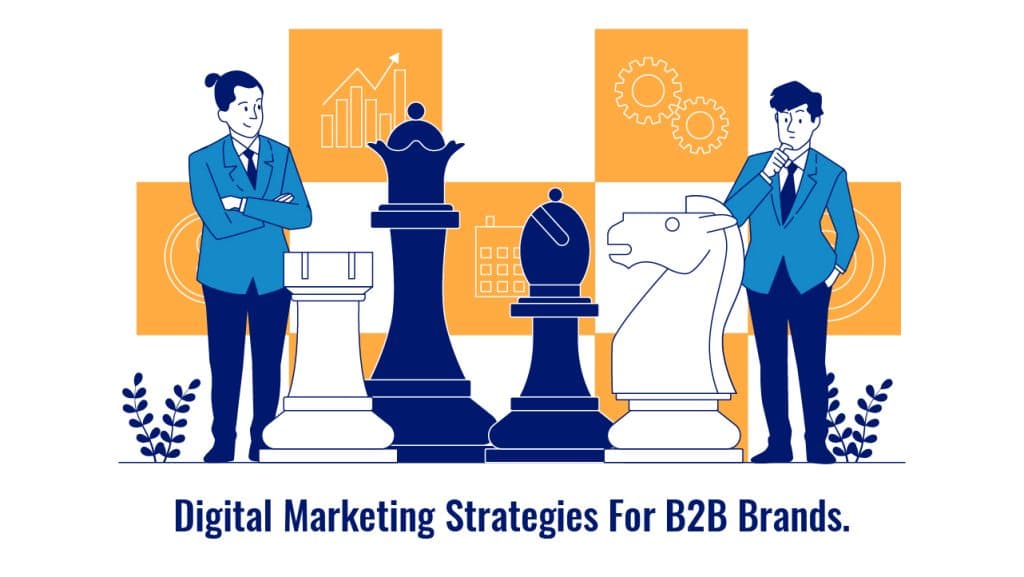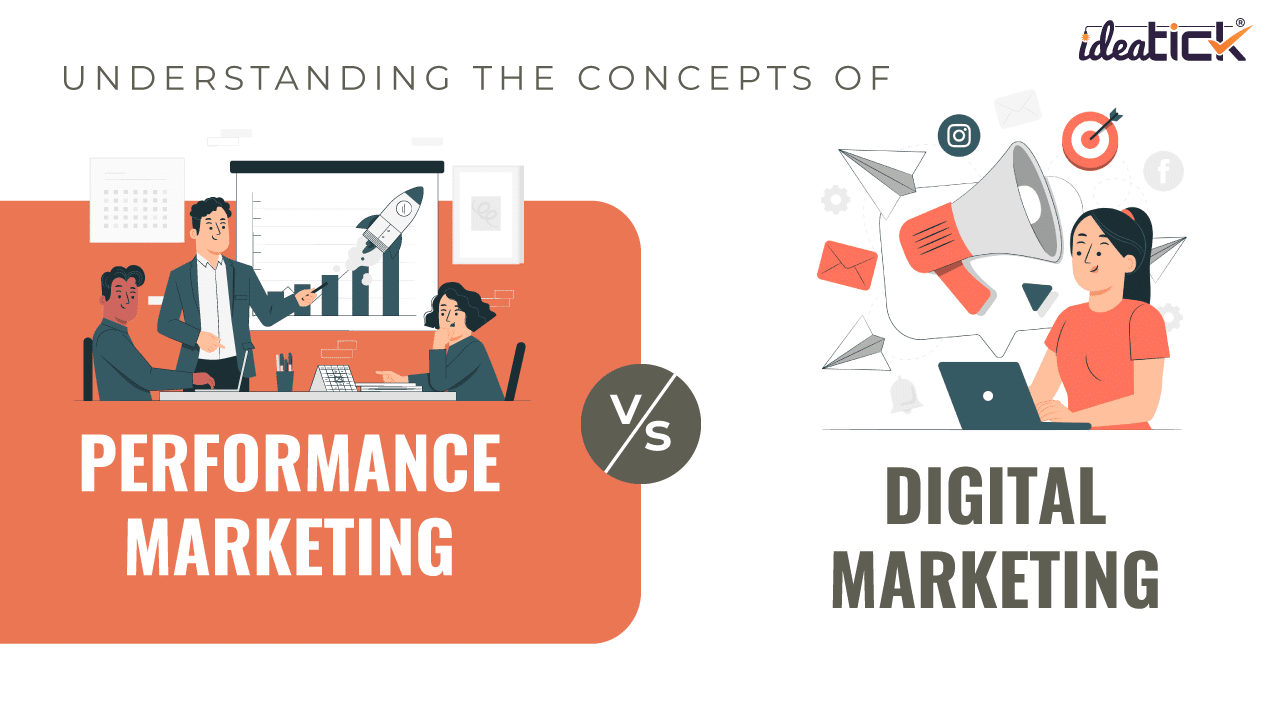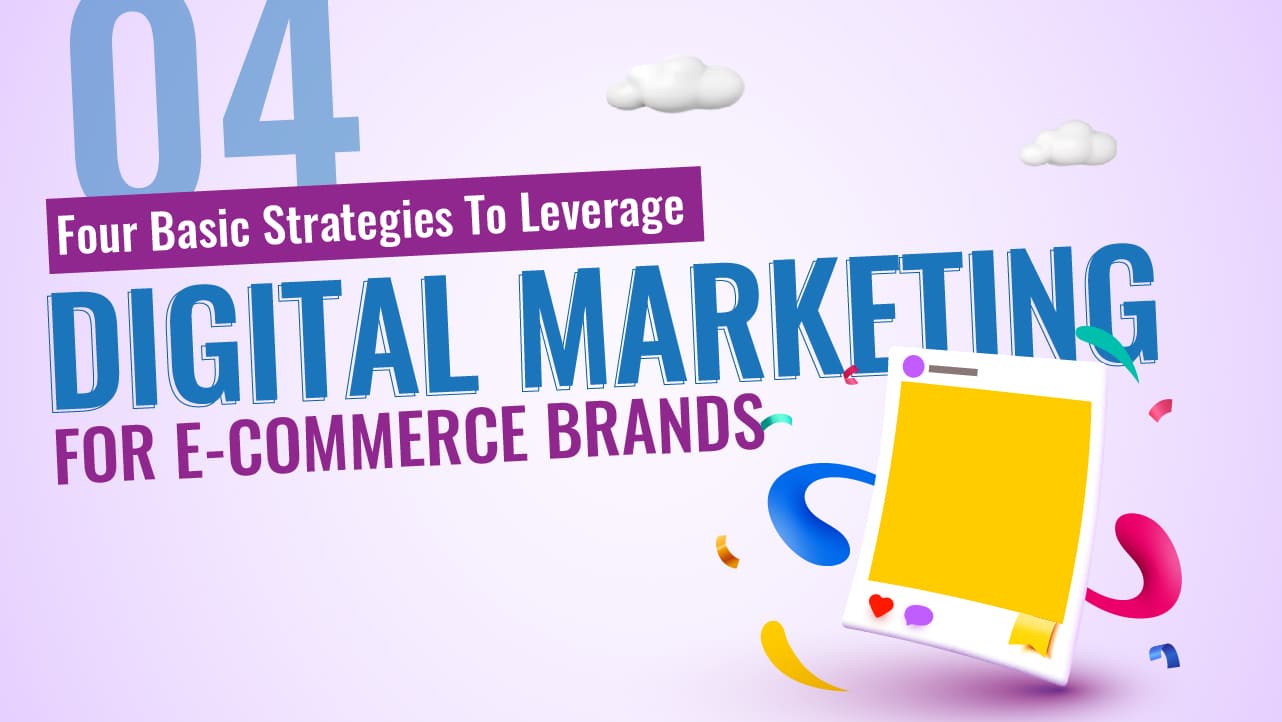The Best Kept Secrets About Digital Marketing For B2B Brands
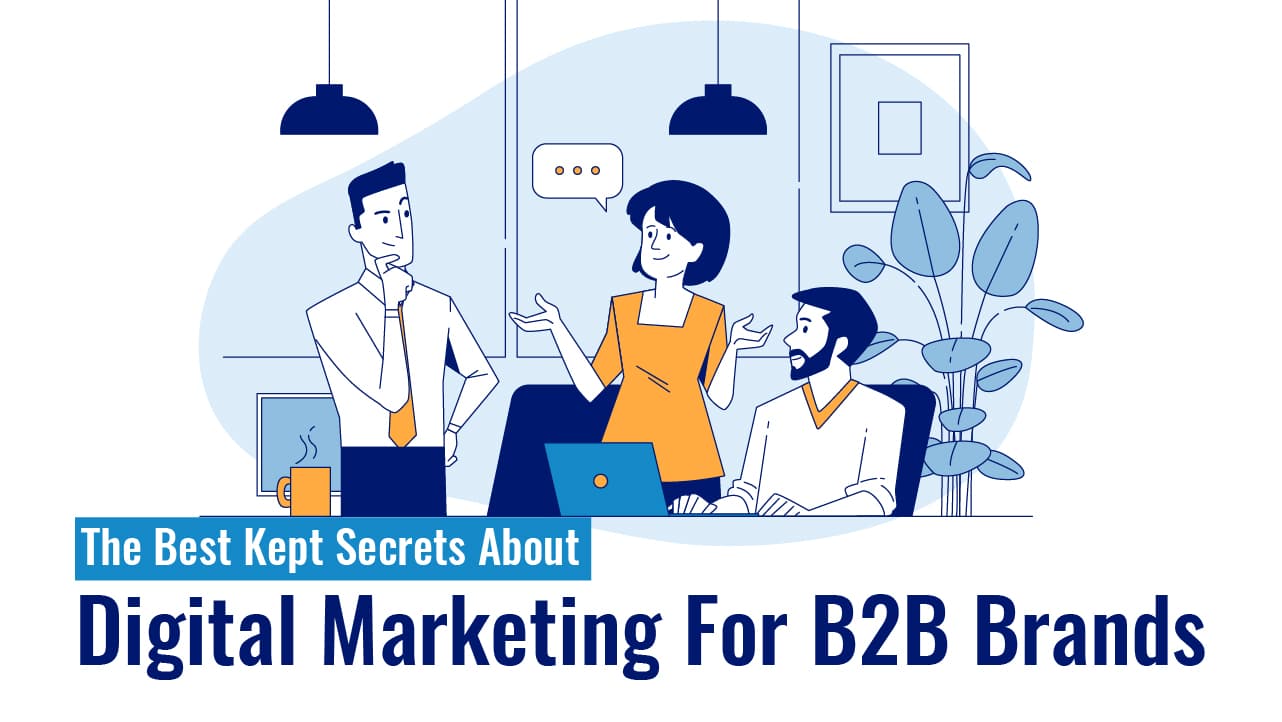
Did you know- digital marketing is a 56% investment for B2B organizations?
Getting digital marketing properly is difficult. Marketers must strike a balance between the requirement for innovation, financial restraints, and channel choices while creating a marketing plan. But, the success of your marketing will ultimately depend on your audience.
If your buyer persona is not properly targeted, your marketing efforts are likely to be ignored. Planning a digital marketing strategy without a proper buyer persona is nothing but adding salt to the ocean. A recent analysis found that 37 Million visits to social networking sites resulted in around 529,000 orders. Among other things, Facebook aids in increasing website traffic, which results in sales that account for an average of 85% of all orders. Being a B2B marketer, you should have a few digital marketing gimmicks up your sleeve to keep one step ahead of the competition.
Before you pick your pen and note to jot down digital marketing for your B2B, there are a few stages to follow before moving on to implementation.
Brand Positioning:
To create a successful plan, you must be entirely aware of your brand positioning. Your brand identity, or how customers perceive your business, is summed up in one line. Once you develop a brand positioning statement that both your team and potential customers can embrace, you’ll be ready for the next phase.
Target Audience:
Determine the people who require the products or services that your company provides. It is possible to use this information to create client personas and understand the buying process, which is a very useful tool for any kind of marketing.
Explore Different Marketing Channels:
Your competition study will show you the various marketing channels your rivals successfully employ as well as the ones they haven’t used. Once the initial stages of creating your B2B marketing strategy are accomplished, you can diversify your own B2B marketing portfolio and connect with the businesses you need to. Research channels, techniques, and technologies to increase leads and your customer funnel based on your competitor analysis and consumer segmentation.
For business owners, digital marketing is a crucial component of e-commerce. As a result, you must create one right away and start putting it into practice! Do you require assistance with optimizing your website? After doing an audit of your site, our SEO consultant will offer a list of recommendations for improving its performance. Is there a need for your website in any other places? Our expertise enables us to identify the features, subtleties, and technological advancements that will make your online business appealing to clients, practical, efficient, and high-performing. Be sure the eCommerce website development business you pick can create the ideal website for you in terms of functionality and design.
How to Integrate Social Media Into Your Current Digital Marketing?
The effectiveness and results of your campaigns may be easily measured when you employ digital marketing techniques. Even digital marketing tools are readily available, which makes it simple to ascertain which strategies were most successful for your B2B business. You may hone your B2B digital marketing strategies and adjust your efforts to make them more fruitful because what gets measured gets improved. The outcome? A higher Return for your B2B company.
Because you’re attempting to open two doors with almost identical locks but different keys, conventional marketing strategies don’t work for B2B campaigns. Let’s go through B2B digital marketing tactics you can employ to attract new clients and boost your revenue now that we understand what B2B digital marketing is and why it’s crucial:
Email Marketing:
According to Vital Design, a digital agency, more than 72% of B2B buyers are open to sharing helpful content via email. This indicates that your emails are dynamic and do not simply land in the spam folder. In other words, similar to the shares you receive on social networks, your emails will be forwarded.
Domain Authentication:
Your overall number of email opens, which in turn influences the number of clicks back to your website, can be significantly reduced if your email ends up in the spam folder. Authenticating your domain is one technique to increase opens and delivery rates. Email authentication is crucial since you don’t want to end up in the spam folder.
Subject Liner:
The first thing your client will notice when your email enters his or her inbox is your subject line. You must provide them with all the information they need right immediately because you only have a small window of time to pique their interest in your offer. The headline is equally important if you can get the customer to open the email. While the subject line will entice readers to click and open the email, the email’s title should urge them to read the rest of your content. Also, don’t forget about straightforward tactics like using an emoji.
Email Header:
This is your email campaign’s most important visual element. B2B sales demand relevant content for your audience, but you must first pique their curiosity. It is what your banner needs to do. The average office worker receives 121 emails daily, so you only have a brief window of opportunity to get their attention. It implies that the header section of your email, which is the area that recipients will see right away when they open it, needs to communicate your message.
Target Addressing:
As you want to produce B2B sales and leads, you should be aware that not all of the decision-makers in your target audience play the same responsibilities in their organizations. Whilst it’s often not the greatest option, you’ll want to get in touch with the CEOs of the businesses your campaign has targeted. Why? Say your goal is to market office automation goods. Institutions may require certain things, but so do large corporations, neighborhood stores, solopreneurs, and others. Several types of people are in charge of providing these commodities to their respective businesses. They all come from diverse socioeconomic and educational backgrounds. You will be speaking to CEOs, business owners, and perhaps even their staff, so you need to develop a message that anyone can understand.
Content Creation:
A select few people, particularly those to whom you are speaking here and who receive numerous emails each day and lack the time to read each one in full, enjoy reading lengthy articles or blocks of text. For this reason, you must make sure that your message is clear and easy to understand. Make the most important information stand out by using headings and subheadings, bullet points, the proper font, and these formatting elements. Make sure there are adequate white spaces and use short words and paragraphs.
Website:
Given the high standards B2C customers have for their online experiences, it should come as no surprise that this translates into the B2B market when the same people purchase online, even if they are doing it for work. Even if the requirements may vary, B2B website owners must nevertheless follow some guidelines to make sure their site is successful and can convert visitors into paying customers.
Password Protected Access:
B2B websites tend to be a little more subdued than B2C websites, which can boast loudly about their low rates and ability to discover the greatest bargains. Several websites choose to construct a password-protected user section to grant access to authorized clients exclusively to conceal their pricing tactics from the general public. This is crucial if your company sells to a network of dealers or resellers or if you want to play it safe with your price because you’re fiercely competitive.
Sophisticated Search:
Making it as simple as possible for your clients to find exactly what they’re looking for quickly is important if you have a vast catalog. Instead of depending on out-of-the-box functionality, investing in a specialized search facility for your website can increase the visibility of your products. To make it simple to find products, these clever integrations offer features like fuzzy search functionality to catch common typos, autocomplete search strings, and even the ability to pull across related product photos and categories.
Order Tracking:
Imagine the level of pressure managers, warehouse workers, and accounts are under to meet deadlines for B2B orders if the anticipation you feel when waiting for a delivery of B2C items is significant. Although sending your consumers an email with a tracking number may be standard procedure, consider how you might go above and beyond their expectations. Not just the person named on the order, but also other stakeholders at your customer’s firm, can greatly benefit from an online order tracker that displays each step of the purchase process and its current progress.
Inventory Level:
Nothing is more frustrating than making an order just to learn that not the items are available. Moreover increasing customer service problems will erode customer confidence in your business. Customers can view real-time inventory updates on product sites, which reduces the possibility of overselling goods and letting down potential customers.
Flexible Checkouts:
Every eCommerce business must have a checkout process, and for B2B stores this process can be particularly challenging. Every website places high importance on lowering the risk of cart abandonment, thus adding components like guest checkout, flexible payment methods, the ability to retrieve address information, or even repeating previously made orders, can all be crucial.
Mobile Flexible Design:
Last but not least, it’s critical that your website for business-to-business transactions is prepared to support mobile customers. It will not only please Google, whose algorithm updates in recent years have favored this “mobile first” strategy, but it will also make it much simpler for your customers to browse and make purchases. Don’t lose out because 61% of product research done online is done on a smartphone.
Digital Marketing:
More B2B buyers are using social media to make purchasing decisions. Today, social media is used by 40% of B2B buyers to inform their selections. Because of this, according to Gartner, B2B marketing leaders allocate an average of 12.2% of their marketing expenditures to social media.
LinkedIn:
LinkedIn ought to be your preferred social media platform if you work in the B2B industry. A platform for business networking and lead development, LinkedIn has more than 830 million members. As a result, marketers consider LinkedIn to be one of the most reliable social media networks. In fact, according to 40% of B2B marketers, LinkedIn is the best tool for generating qualified leads. LinkedIn is a great place to start if you’re a B2B marketer trying to engage with potential customers and nurture them throughout the software purchase experience.
Twitter:
Everyone can take part in real-time conversations on Twitter, another potent social media platform with over 465 Million monthly active users (and counting). Because of this, it serves as the best platform for software marketers to interact with prospects in real-time and establish bonds, 54% of B2B companies use Twitter as part of their social media marketing plan to cultivate prospects and win them over as devoted clients. Engagement on Twitter is increased by anything that provides information, counsel, or news in real time. To help you focus on your target audience, Twitter offers a variety of targeting options like interest targeting, behavior targeting, and lookalike audiences.
YouTube:
Around 2 Billion people use the video hosting and streaming service YouTube each month. Not just millennials are addicted to YouTube; B2B brands are also using it to connect with and engage with their target demographic. By posting educational videos on YouTube, marketers may engage with their target audience, establish trust, and generate leads. In fact, during the upcoming months, 67% of marketers intend to enhance their YouTube video marketing activities.
Facebook:
With 2.9 Billion monthly active users, Facebook is the most popular social media site. It’s a significant marketing technique that enables companies to sympathize with prospects, comprehend their problems, and establish a more personal connection with them. Software marketers frequently ignore Facebook because it isn’t primarily a B2B social media site. To reach and engage their target audiences, B2B marketers can take advantage of its various features and targeting capabilities, including lead collection forms, custom audiences, lookalike audiences, and dynamic ads.
Instagram:
With over 1 Billion users logging in each month, Instagram is one of the more contemporary social media platforms. Brands are now embracing Instagram as a powerful marketing tool to target, reach, and engage prospects; the platform is no longer just for personal use. Instagram may be used by B2B marketers to share behind-the-scenes content about their brand, attract attention to their websites, and generate leads. Instagram works well with visual content, such as images, videos, and infographics. Users scrolling through their feeds are more likely to see these forms of material. Marketers can use these images to demonstrate their product in use and for a variety of other purposes.
SEO & Content Marketing:
When selling to businesses, a large demographic group like those who desire to learn French is not usually your target market. Instead, you usually aim your efforts toward a small group of corporate decision-makers. For instance, B2C websites frequently target search phrases that receive thousands of monthly visitors. While you may focus on a term with 50 or 10 monthly searches. B2B SEO is the application of various online techniques, such as keyword research and page metadata, to reach decision-makers within an organization. A successful strategy attracts customers looking for the product or services your company is selling on your website. There are several different parts to B2B SEO. Each one adds something to your overall strategy. If you fall short in one area, you still have the option to optimize your site.
Technical SEO:
These are the changes you make to your website’s core components. It addresses issues like responsive design, page load time, and XML sitemap.
Content SEO:
The practice of creating content based on research on user expectations and search intent is known as content SEO or B2B content marketing for SEO. We proceed through research, ideation, content generation, and promotion stages.
On-Page SEO:
On-Page SEO is content optimization on a page by itself. It includes structuring the content so that it is both useful to the user and discoverable by search engines, including the meta description and title tag on a page or blog post, the alt text on images, and more.
Off-Page SEO:
Having high-quality pages connect to you on a certain subject raises your perceived competence in that subject and is also referred to as backlinks. Page or post engagement is also included.
PPC Marketing:
PPC is a system that enables B2B businesses to quickly and effectively collect leads. By entering search terms on Google or Bing, your target market is essentially raising its hand and expressing interest in your good or service. The best part is that they are actively seeking you out, as opposed to you spending ten hours at a trade fair asking attendees what their biggest business difficulties are and hoping that their requirements align with what you have to offer. PPC is an example of inbound marketing because of this. PPC campaigns use a variety of platforms to connect with their target demographic. They fall into three types in particular:
Search Engine Marketing:
Using search engines like Google and Bing, SEM is the most popular and conventional type of PPC advertising. SEM campaigns can be tailored to target particular demographics, interests, and even geographic areas by using keywords to target appropriate people.
Display Advertising:
Another popular PPC strategy for B2B is display advertising, which uses banner advertisements, video commercials, and other rich media to target specific audiences. Targeting particular demographics, hobbies, and even geographic areas is possible with display campaigns.
Social Media Advertising:
The newest PPC strategy is called social media advertising, and it targets users on sites like Facebook, Twitter, and LinkedIn. Social media campaigns can be made specifically for a given demographic, set of interests, or even geographic area.
If you don’t think about your audience, marketing won’t work, and no audience is as unpredictable and demanding as company clients. You can target your B2B marketing efforts to discover them if your marketing does not clarify how your firm might profit from theirs. B2B marketing through digital channels. You must focus exclusively on a B2B digital marketing strategy if you want to make sure that your company stands out from other B2B businesses, has the correct levels of brand awareness, and is also taken care of concerning lead generation.
Adapting to a New Digital Reality:
There are many benefits to connecting with your audiences online, from digital advertising to producing mobile-first content! Effective digital marketing for B2B companies involves communicating to the client your digital marketing strategies and professionalism. Your customers can learn more about you as a company with just one click. Your audience is more likely to trust you as a brand and invest in you if your digital marketing strategy is well-designed and contains the kind of content they want to see. It’s important to reconsider how your customers’ experiences have altered since the pandemic to adapt to this online-first environment. Having an extensive online presence and embracing digital marketing fast can increase sales and market share.
Competition:
In recent years, the startup culture has replaced several enterprises, is replacing other industries, and has altered market dynamics. It suggests that beginning a business, particularly a B2B one, is easier than ever for anyone. Also, since many firms nowadays were created in the digital era, they can profit from implementing SEO techniques, social networking platforms, email marketing, and content marketing! A plethora of expertise is available from this new round of firms! Also, the emergence of new companies could lead to an increase in the market, providing greater room for expansion—but only if you can successfully compete. And you can only accomplish it if you have sufficiently developed technologically. Online marketing is therefore practically necessary.
Marketing Channels Proliferation:
Social media dependence is growing as businesses engage with one another on them more frequently today. Social media platforms like LinkedIn are the best for locating new B2B clients and putting your brand in front of the right individuals. In that regard, you have the opportunity to create a captive audience on various B2B social media sites. Social network marketing is a great way to reach your customers where they are, but your other marketing platforms should also reflect this.
Cost Effective:
Compared to digital marketing, spending money on traditional outreach is probably worse because it is less successful. You can save time and money with digital marketing, particularly with elements like pre-scheduled emails, retargeting advertisements, targeted offers, and other automated components.
Customer Evolution:
Even though they are businesses themselves, your clients now are far more empowered than they were ten years ago. They are in a hurry and have immediate needs. Giving them seamless business and digital channel integration is essential in this regard. If pay-per-click marketing is being employed, for instance, it needs to be done in a way that appeals to the customer and satisfies their needs. It entails optimizing your landing page so that the lead may speak with a salesperson in a short period.
B2B digital marketing makes it feasible to increase your marketing budget, build your brand, and generate leads. Ideatick’s staff is an expert at creating targeted marketing campaigns to build your b2b brand and attract more customers to your website. Despite industry shifts and uncertainty, we offer a full suite of digital marketing agency services to assist companies like yours in achieving steady growth.
Nowadays, customer journeys are online, so it makes sense to establish a digital presence on social media to interact with customers efficiently. Digital marketing may help you move prospects along the funnel by creating tailored campaigns for each stage. You can immediately reiterate by using digital marketing, which enables more precise targeting and better analysis of your marketing efforts.

